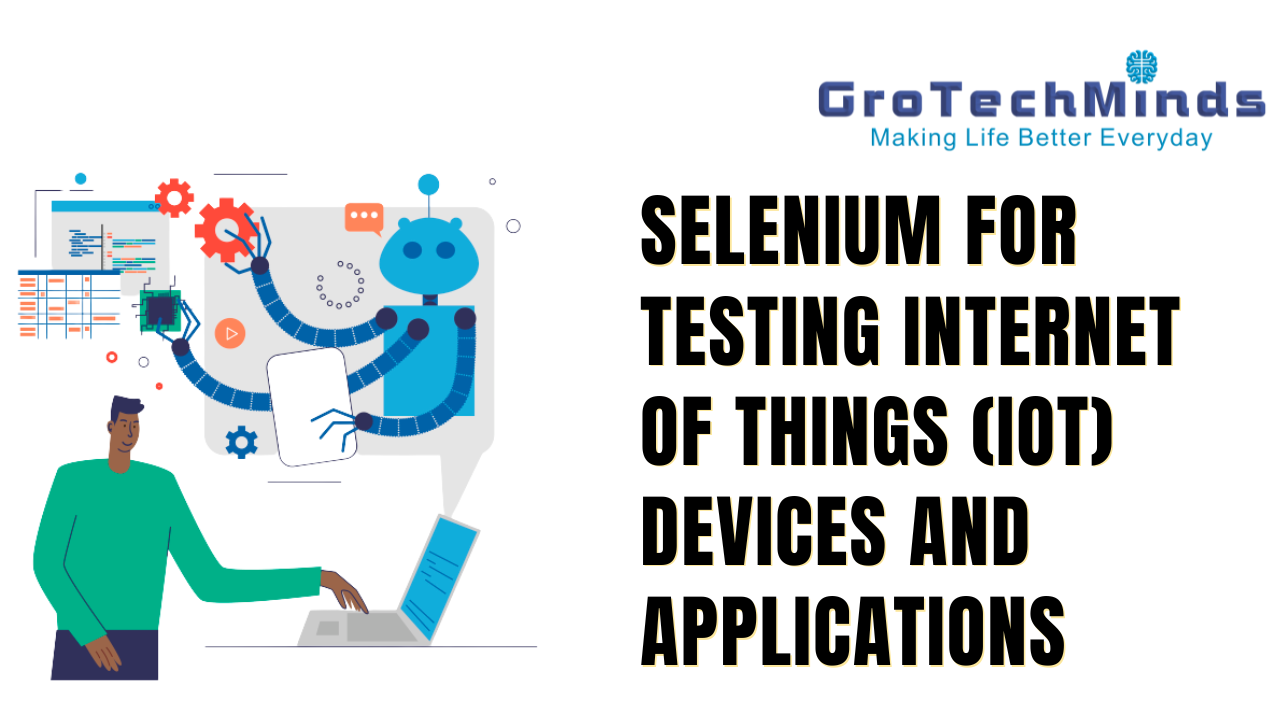Introduction:
The Internet of Things (IoT) is becoming more and more common in today’s connected society, completely changing the way we interact with technology. IoT gadgets, which improve efficiency, convenience, and connectivity, are everywhere. They range from smart household appliances to industrial sensors. However, testers face particular difficulties in guaranteeing these gadgets’ dependability and functionality. We’ll look at how Selenium, a well-liked tool that’s mainly used for web application testing, may be used to test IoT apps and devices in this post.
Understanding IoT Testing Difficulties
Traditional software testing is very different from testing IoT devices and applications. Among the principal difficulties are:
Rich Ecosystem:
The Internet of Things (IoT) includes a diverse array of devices, each with unique hardware, software, and communication protocols. Compatibility testing across several platforms and devices is necessary for testing throughout this heterogeneous ecosystem.
Connectivity Problems:
For efficient communication and operation, Internet of Things devices need to be connected to a network. It is essential to test for various network situations, such as sporadic outages and low connectivity, in order to guarantee dependable operation.
Security Issues:
As Internet of Things devices proliferate, security flaws have grown to be a big worry. Testers must evaluate the security protocols put in place in the Internet of Things applications and devices, such as secure firmware updates, authentication methods, and data encryption.
Data management:
Data management is necessary since Internet of Things devices produce enormous volumes of data that must be effectively gathered, handled, and analyzed.
How Selenium Can Help with IoT Testing Issues:
Although Selenium is mainly used for web application testing, its adaptability and extensibility also make it a useful instrument for Internet of Things testing. How Selenium can handle the particular difficulties of Automation testing Internet of Things devices and apps is as follows:
Cross-Platform Testing:
With Selenium’s support for cross-browser testing, testers can confirm that Internet of Things apps work properly on various platforms and web browsers. Through user interaction simulation and UI element verification, Selenium contributes to the maintenance of consistent functionality in a variety of settings.
Network Simulation:
To simulate different network conditions during testing, Selenium can be combined with tools for network simulation such as BrowserMob Proxy or Charles Proxy. To determine how resilient Internet of Things apps are to unfavorable circumstances, testers might create scenarios with low bandwidth, exacessive latency, or network congestion.
Security testing:
Selenium is capable of automating security testing procedures, including vulnerability screening and penetration testing for Internet of Things apps and devices. Test scripts can be created to mimic typical security breaches and confirm that security measures put in place in IoT systems are working.
Data Validation:
Testers can confirm the correctness and integrity of data produced by Internet of Things (IoT) devices by using Selenium automation testing capabilities for data validation jobs. In order to guarantee the dependability of Internet of Things applications, test scripts can be created to check data inputs, outputs, and processing logic.
Case Study:
Evaluate an IoT-enabled smart home system
Let’s look at a case study of a smart home IoT system that includes several connected devices including smart thermostats, security cameras, and lighting controls to demonstrate the usefulness of Selenium in IoT testing.
Compatibility testing:
Testers can automate the execution of test cases across various web browsers and devices, such as PCs, smartphones, and tablets, by using Selenium WebDriver. Compatibility problems can be found and fixed by confirming the smart home app’s responsiveness and functionality across a range of devices.
Testing for Network Resilience:
By combining Selenium with tools for network simulation, testers may mimic network disturbances like packet loss or congestion. Testers can evaluate the smart home system’s capacity to sustain connectivity and functionality by observing how it behaves in certain scenarios.
Security Assessment:
To conduct penetration testing and security scans on the Internet of Things (IoT) system in smart homes, selenium scripts can be created. By spotting potential weaknesses in authentication protocols or unsafe API endpoints, testers help developers put the right security safeguards in place.
Data Integrity Verification:
Testers can confirm the accuracy of data gathered from several sensors and devices inside the smart home ecosystem by using Automation testing with Selenium. Testers can verify that the data processing and aggregation procedures are reliable by comparing expected data values with actual readings.
Conclusion:
In conclusion, the necessity for efficient testing procedures is become more and more important as the Internet of Things spreads. Despite Selenium’s conventional association with web application testing, its scalability and versatility make it an excellent choice for difficulties related to IoT testing. Testers can handle incompatibility concerns, simulate network situations, evaluate security vulnerabilities, and verify data integrity in IoT devices and applications by utilizing automation testing in Selenium capabilities. Testers can improve user experience and spur innovation in the IoT space by ensuring the dependability, security, and performance of IoT systems with the correct tools and techniques in place.


